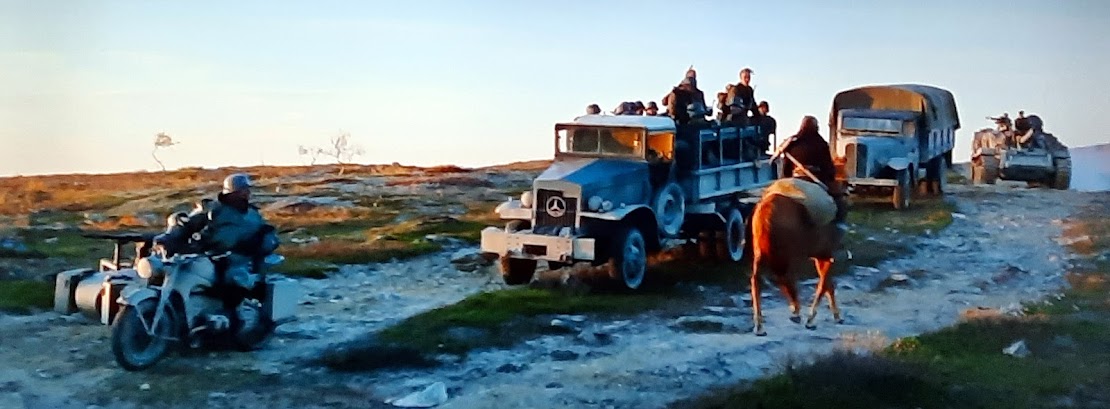the CD and Superbee model are appreciated! Thanks Keith!
Saturday, November 25, 2023
compliment of the day!
Hey Jesse!
You continue to amaze me everyday with a continuous stream of great content… you never slow down.
You continue to amaze me everyday with a continuous stream of great content… you never slow down.
Andrew
Friday, November 24, 2023
recommending the movie Sisu for the WW2 military trucks, tanks, and sidecar - and the unbelievable action
During the last desperate days of WWII, a solitary prospector (Jorma Tommila) crosses paths with Nazis on a scorched-earth retreat in northern Finland. When the Nazis steal his gold, they quickly discover that they have just tangled with a legendary ex-commando
If you want to see the lead actor in another movie, I recommend Rare Exports. He is really fun to watch in action movies
The Mount Emily Shay
The City of Prineville requested an end to the loan agreement, and, since OHS is not equipped to house nor operate a locomotive, the organization sought a new steward. A request for proposals was released in April, and the Oregon Rail Heritage Foundation was selected to be the new owner of the Mount Emily Shay
interesting principles of treating animals well, possibly based on the result of more peace and quiet, and public sanitation - resulted in public watering and feeding of stray cats and dogs, and watering of birds
According to Islamic culture, people should avoid being unjust to others, and it places animals' rights above human rights since it is possible to compensate for the wrongdoing to people by asking for their forgiveness; however, it is not possible with animals as they lack reason.
The Ottomans established foundations to feed street dogs and wolves in the mountains, provide water for birds on hot summer days and treat storks with broken wings or injured horses. They also built birdhouses in the courtyards of buildings such as mosques, madrasahs and palaces and placed water pans on gravestones for birds.
You can see plate-shaped stones that were placed in front of some old houses to feed street animals. The leftover food and bones are left on these stones for street dogs and cats. As dogs share these foods, they do not fight in the streets.
https://www.dailysabah.com/feature/2015/01/18/the-ottomans-exemplary-treatment-of-street-animals
https://www.researchgate.net/figure/Nesting-by-a-house-sparrow-in-Sivakasi-town-Tamil-Nadu_fig2_353144031
https://www.mdpi.com/2073-4441/5/4/1996
Similarly, the beggars were regarded as a public situation of helping those that were unable to change their circumstances, and so the Ottomans created "Sadaka Tasi" - the stone of donation". You enter your hand whether you're giving or taking and no one will no what you're doing.
https://qr.ae/pKMaWn
Istanbul under Ottoman empire had 1400 public toilets while the rest of Europe had none
Thursday, November 23, 2023
1927 mpg
https://books.google.com/books?id=Vr7bDBEf3a0C&pg=RA5-PA46&lpg=RA5-PA46&dq=Cloverland+Motor+Sales+Sidnaw&source=bl&ots=JpzBg7EDO6&sig=ACfU3U2Gu8Jq56iCY52dbChkuEe440ScDg&hl=en&sa=X&ved=2ahUKEwjO8uOvjNyCAxXmZzABHd6xBKs4FBDoAXoECAQQAw#v=onepage&q&f=false

















































